From an Idea to a Reality
by Professor Dr. hab. Jerzy Mizgalski
In the late 1990’s, I received a telephone call which completely surprised me. A pleasant sounding voice advised me that I was speaking with a person from Częstochowa, currently living in Venezuela, Professor Elżbieta Asz-Mundlak. She introduced herself as the great-niece of Częstochowa Chief Rabbi Nachum Asz. With great curiosity, I awaited our first meeting.
I suggested that we meet in my home, because my apartment was where my Jewish- related notes, archival material, literature and photographs are stored. I had already concerned myself with Jewish history issues for over ten years.
My extraordinary guest showed a great interest in the work which, together with my now-deceased colleagues, Dr Zbigniew Jakubowski, and Dr hab. Janusz Lipiec, I had undertaken since the early 1980’s.
Professor Asz-Mundlak 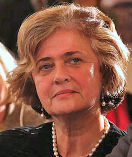 (pic right) raised the idea of making a documentary film about her unusual story as well as to describe her search for any traces that remained of her family and the Jewish community, following the tragedy of the Holocaust. Her enthusiasm spread to my colleagues. Jerzy Piwowarski, then Associate Dean of the Art Department of Jan Długosz University in Częstochowa, Jarosław Kweclich, head of that Department, then Archives Director, Elzbieta Surma-Jończyk plus the directors and staff of the Częstochowa Museum all joined into the project.
(pic right) raised the idea of making a documentary film about her unusual story as well as to describe her search for any traces that remained of her family and the Jewish community, following the tragedy of the Holocaust. Her enthusiasm spread to my colleagues. Jerzy Piwowarski, then Associate Dean of the Art Department of Jan Długosz University in Częstochowa, Jarosław Kweclich, head of that Department, then Archives Director, Elzbieta Surma-Jończyk plus the directors and staff of the Częstochowa Museum all joined into the project.
The intensity of my work on this project led me to search the Public Archives in Częstochowa, Kielce and Łódz, the Jewish Historical Institute in Warsaw, as well as the Archiwum Akt Nowych (New Records Archive) of Warsaw. As the data collected grew, the information gathered regarding the Jewish community of Częstochowa in the 19th and earlier 20th centuries broadened.
Together with Elzbieta, we came to the conclusion that the subject required wider study and was of such interest that it could not be accurately represented in just one film.
Elżbieta made her documentary film entitled “I Was Lucky: A Lesson in History”. In the film, she presented the dramatic circumstances of her childhood when, as a little girl from the Jewish ghetto, she found protection with the Nazarene Sisters and then with the Catholic Częstochowa Zieliński a family.
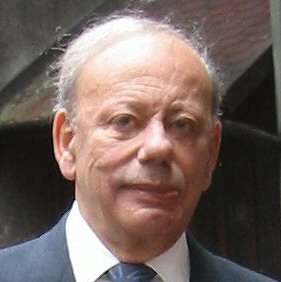
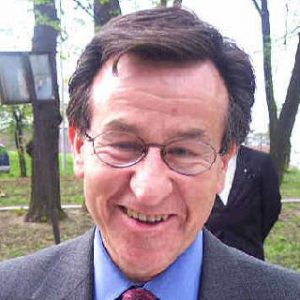 During Elżbieta’s next visit to Częstochowa, I had the pleasure to meet with another former Jewish resident of Częstochowa who, like her, had the good fortune to have survived the hell of the ghetto and HASAG. Sigmund Rolat (pic left) and his cousin, Alan Silberstein (pic right), were extremely interested in the research material that we had collected and acquainted themselves with our planned project – a museum exhibition which, at the time, went under the working title of The World of Nachum Asz. From that meeting, the work took on an even greater tempo and the scope of the endeavour changed.
During Elżbieta’s next visit to Częstochowa, I had the pleasure to meet with another former Jewish resident of Częstochowa who, like her, had the good fortune to have survived the hell of the ghetto and HASAG. Sigmund Rolat (pic left) and his cousin, Alan Silberstein (pic right), were extremely interested in the research material that we had collected and acquainted themselves with our planned project – a museum exhibition which, at the time, went under the working title of The World of Nachum Asz. From that meeting, the work took on an even greater tempo and the scope of the endeavour changed.
Sigmund turned out to be an amazing man who, as a Częstochowiańin, was visiting his home city after many years and was treating his stay, not only as a return to memories and to his childhood and youth, but also as an opportunity to concern himself with everything that was happening today in Częstochowa. There were many emotional moments. For me, the most inspirational were my discussions with him.
The work surrounding the undertaking “The Jews of Częstochowa – Coexistence, Holocaust, Memory” attracted the interest of the city authorities who offered assistance in various ways. In discussions with students, either privately or with students and teachers in schools, I was bombarded with questions about how the preparatory work on the Exhibition was progressing. Sometimes, it gave me the feeling that this was the next “miracle” under Jasna Góra of John Paul II’s – that two communities, Christian and Jewish, together were creating reflections of their common city’s history.
This reflection on the past became a point of departure for us, who were required to reflect more deeply. Documentary evidence of events and historic facts would determine the narrative of the coexistence, the tolerance and the inter-penetration of cultures as conditioning factors on the progress of civilization. Extensive research in archives and libraries, especially that undertaken in Częstochowa, would answer the basic question:
which had co-existed here for over 200 years?”
“What is the current relationship of the inhabitants of Częstochowa to the Jews, especially those who,
due to the tragic years of the Holocaust, left never to return?”
A meeting of history with the current situation became a lesson for those Jews who arrived from around the world as well as for contemporary Częstochowiańin. Those who, with ill-will hovered here and there in oral history, had to give way to a rational view of relations between the two nations – Polish and Jewish.
“Days of Remembrance – The Jews of Częstochowa”, cultural events created in this city for the first time on so wide a scale after the great tragedy of the Holocaust, would serve the idea of building future societies on foundations of the memory of past historical events. Mutual recognition, as regards to past Częstochowa communities, both Polish and Jewish, was the thread that determined coexistence and tolerance.
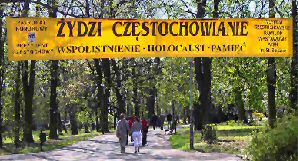 The three days (21st-23rd April 2004) of cultural events, meetings and remembrances were something more for the Jewish visitors from all continents of the world, whose family-roots and even childhood is united “from under the cloisters of Jasna Góra” with the city, with the centre of Catholic religious life in Poland and known as such worldwide.
The three days (21st-23rd April 2004) of cultural events, meetings and remembrances were something more for the Jewish visitors from all continents of the world, whose family-roots and even childhood is united “from under the cloisters of Jasna Góra” with the city, with the centre of Catholic religious life in Poland and known as such worldwide.
It was a return to the years of their youth and their childhood, when they still felt the care of their mothers, fathers, times with brothers, sisters, cousins, traditional family gatherings during Jewish religious holidays. Streets, houses, the Jewish cemetery – all evoke memories that are painful – of what has gone forever.
 I also had the honour to edit the Exhibition’s album in cooperation with other staff of the Jan Długosz University, the State Archives in Częstochowa and the Jewish Historical Institute in Warsaw, who collected the material for the exhibition itself. Together with the exhibition, the album provides an overall essence. Each of its parts correspond with the arrangement of the material displayed in the exhibition.
I also had the honour to edit the Exhibition’s album in cooperation with other staff of the Jan Długosz University, the State Archives in Częstochowa and the Jewish Historical Institute in Warsaw, who collected the material for the exhibition itself. Together with the exhibition, the album provides an overall essence. Each of its parts correspond with the arrangement of the material displayed in the exhibition.
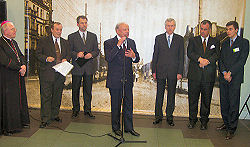 At 4.00pm, in Św.Stasic Park, in the exhibition hall of the Museum of Częstochowa, the exhibition, “The Jews of Częstochowa” was opened. It was a co-operative effort between the staff of the Jan Długosz University in Częstochowa, the State Archive in Częstochowa, the Museum of Częstochowa and the Jewish Historical Institute in Warsaw.
At 4.00pm, in Św.Stasic Park, in the exhibition hall of the Museum of Częstochowa, the exhibition, “The Jews of Częstochowa” was opened. It was a co-operative effort between the staff of the Jan Długosz University in Częstochowa, the State Archive in Częstochowa, the Museum of Częstochowa and the Jewish Historical Institute in Warsaw.
The exhibition’s Official Opening was attended by many honoured guests. Among those gathered inside and in front of the building’s entrance were many conference attendees and a great number of city’s residents.
Written by:
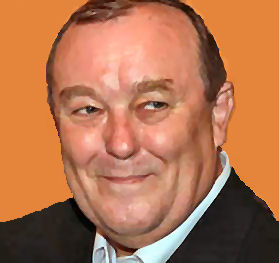
Prof. Dr. Hab. Jerzy Mizgalski
Historian,
former Vice-Chancellor of the
Jan Długosz University and
one of our Exhibition’s creators.
